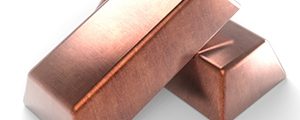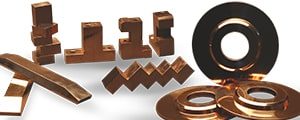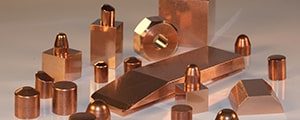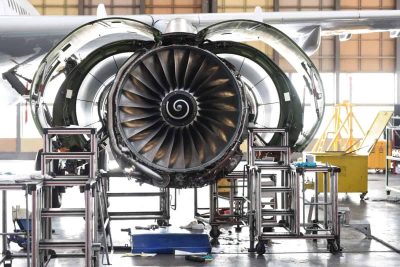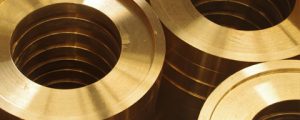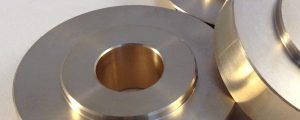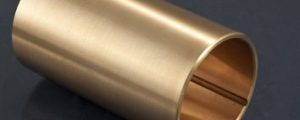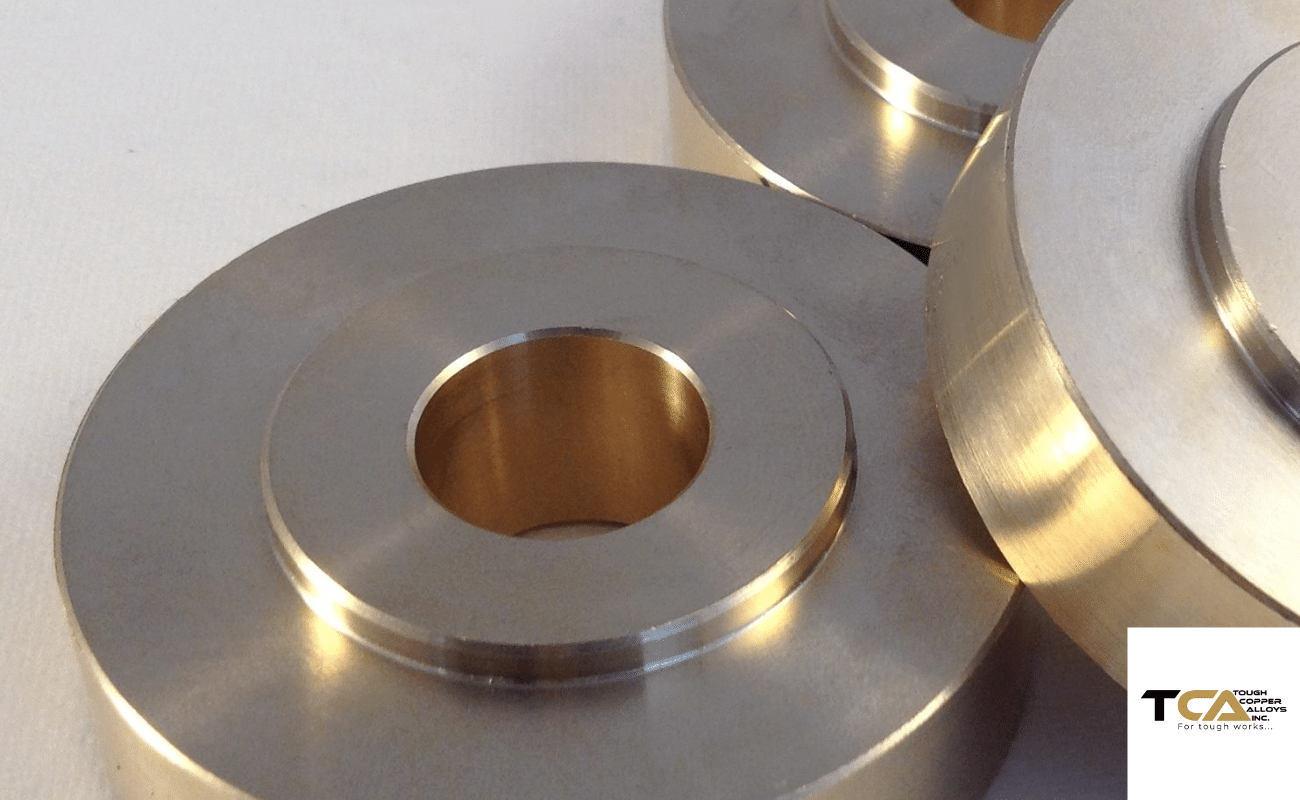What is “C86400” Material?
C86400 is a type of bronze alloy that belongs to the family of leaded bronze materials. This material is known for its excellent corrosion resistance, good strength, and high wear resistance. C86400 is also known by its industry designation, which is SAE 430B.
Like other bronze alloys, C86400 is primarily composed of copper with the addition of other elements to enhance its properties. In the case of C86400, it contains about 60-67% copper, 0.8-1.5% lead, and 0.05-0.25% phosphorus. These additional elements play a crucial role in determining the alloy’s properties and performance.
C86400 is commonly used in various applications due to its excellent mechanical and physical properties. It is often chosen for applications that require high wear resistance, such as bearings, bushings, and valve components. Its good corrosion resistance also makes it suitable for marine environments and other applications where exposure to harsh chemicals is a concern.
C86400 can be easily fabricated using common techniques such as casting, forging, and machining. It is known for its good machinability, which allows for the production of complex parts with tight tolerances.
In terms of applicable specifications, C86400 is covered by several industry standards, including ASTM B505 and SAE J461. These standards define the composition, physical, and mechanical properties of the material, ensuring that it meets the required performance criteria.
In summary, C86400 is a high-performance bronze alloy that is suitable for various applications that require excellent wear and corrosion resistance. Its composition, physical and mechanical properties, and applicable specifications make it an ideal choice for many industries, including aerospace, marine, and manufacturing.
Application Areas & Industries
C86400 is a high-strength manganese bronze alloy with excellent mechanical properties, including high tensile and yield strength, hardness, and wear resistance. Here are some of the application areas and industries that commonly use C86400:
- Marine Industry: C86400 is commonly used in the marine industry for applications such as propellers, shafts, and bearings. Its high-strength and corrosion-resistant properties make it ideal for marine applications that require durability and reliability.
- Aerospace Industry: C86400 is also used in the aerospace industry for applications such as landing gear parts, hydraulic components, and bearing cages. Its high-strength and wear-resistant properties make it ideal for use in critical aerospace components.
- Heavy Equipment Industry: C86400 is used in the heavy equipment industry for applications such as bushings, gears, and bearings. Its high-strength and wear-resistant properties make it ideal for use in heavy-duty equipment that requires reliable and long-lasting components.
- Automotive Industry: C86400 is used in the automotive industry for applications such as gears, bearings, and valve guides. Its high-strength and wear-resistant properties make it ideal for use in automotive components that are subjected to high stresses and wear.
- Industrial Applications: C86400 is used in various industrial applications, such as power generation, mining, and construction. Its high-strength and wear-resistant properties make it ideal for use in applications that require reliable and durable components.
Overall, C86400 is a versatile alloy that is commonly used in various industries for applications that require high-strength and wear-resistant properties. Its unique composition and properties make it a reliable and durable material for use in critical components in the marine, aerospace, heavy equipment, automotive, and industrial industries.
Common Fabrication Processes
C86400 is a highly versatile alloy that can be fabricated through various methods to achieve the desired shape and properties. Here are some of the common fabrication processes used for C86400:
- Casting: C86400 can be cast into different shapes and sizes, making it an ideal choice for applications that require complex shapes. The casting process involves pouring molten metal into a mold and allowing it to cool and solidify.
- Extrusion: Extrusion is another common fabrication process used for C86400. The process involves pushing the metal through a die to create a specific shape or cross-sectional profile. Extruded C86400 can be used in applications that require long, continuous shapes such as rods and tubes.
- Forging: Forging is a process in which C86400 is shaped by applying pressure and heat to the metal. This process can be used to create a wide range of shapes and sizes, including gears, shafts, and valve bodies.
- Machining: Machining is a process that involves cutting, shaping, and drilling C86400 using various cutting tools. Machining can be used to create complex shapes and tight tolerances.
- Welding: C86400 can be welded using various methods such as gas tungsten arc welding (GTAW) and gas metal arc welding (GMAW). Welding can be used to join different parts and create complex assemblies.
Overall, C86400 can be fabricated using a variety of processes to achieve the desired shape and properties for specific applications. The versatility of this alloy makes it a popular choice for a wide range of industries, including marine, aerospace, and automotive.
Chemical Composition
C86400 is a high-strength manganese bronze alloy that contains copper, zinc, aluminum, and iron as its primary alloying elements. The chemical composition of C86400 is carefully balanced to provide excellent mechanical and physical properties that make it suitable for a wide range of industrial applications.
The following table shows the chemical composition of C86400:
| Element | Composition (%) |
|---|---|
| Copper | 60.0 – 66.0 |
| Zinc | 22.0 – 28.0 |
| Aluminum | 5.0 – 7.5 |
| Iron | 2.5 – 5.0 |
| Manganese | 2.5 – 4.0 |
| Lead | 0.05 max |
| Nickel | 0.50 max |
| Tin | 0.20 max |
| Phosphorus | 0.15 max |
| Silicon | 0.10 max |
| Sulfur | 0.08 max |
Copper is the main component of C86400, providing high strength, good thermal conductivity, and excellent corrosion resistance. Zinc is added to improve machinability and provide increased strength. Aluminum and iron are added to improve the strength, hardness, and wear resistance of the alloy. Manganese is added to improve the tensile strength and hardness, while lead, nickel, and tin are added for improved machinability.
Overall, the chemical composition of C86400 provides a unique balance of properties that make it a valuable material for a variety of industrial applications, including marine, aerospace, and heavy equipment industries.
Physical Properties
C86400 is a leaded manganese bronze alloy that exhibits excellent physical properties, making it a suitable material for a wide range of applications. Some of the key physical properties of C86400 are:
Density: The density of C86400 is 7.65 g/cm3, which is relatively high compared to other bronze alloys. This high density contributes to its excellent strength and wear resistance.
Melting Point: C86400 has a relatively high melting point of 1020-1050°C, making it suitable for high-temperature applications.
Thermal Conductivity: C86400 has a high thermal conductivity, which makes it an ideal material for use in heat exchangers and other heat transfer applications.
Electrical Conductivity: C86400 exhibits good electrical conductivity, which makes it suitable for use in electrical and electronic components.
Magnetic Permeability: C86400 has a low magnetic permeability, which makes it suitable for use in applications that require non-magnetic materials.
Overall, the physical properties of C86400 make it a versatile material that is suitable for use in a wide range of applications, particularly those that require high strength, wear resistance, and thermal and electrical conductivity.
Fabrication Properties
C86400 is a high-strength manganese bronze alloy that is known for its excellent fabrication properties. It can be easily fabricated using common techniques and is a popular choice for various industrial applications. Here are some of the fabrication properties of C86400:
- Weldability: C86400 can be easily welded using various welding techniques, including gas tungsten arc welding (GTAW) and gas metal arc welding (GMAW). It is important to note that preheating and post-welding heat treatment may be required to prevent cracking and ensure good weld quality.
- Machinability: C86400 has good machinability and can be easily machined using conventional machining techniques. Its high-strength properties may result in tool wear, but proper tool selection and cutting parameters can help minimize tool wear and improve machining efficiency.
- Formability: C86400 can be easily formed using hot and cold working techniques. Hot forming, such as forging and hot rolling, can improve the material’s mechanical properties, while cold forming, such as bending and stamping, can be used to produce complex shapes and designs.
- Casting: C86400 can be easily cast using various casting techniques, such as sand casting, permanent mold casting, and investment casting. It is important to note that proper casting parameters, such as mold temperature and pouring temperature, must be maintained to ensure good casting quality.
Overall, C86400 is a versatile alloy that can be easily fabricated using common techniques. Its excellent fabrication properties make it a popular choice for various industrial applications, such as marine, aerospace, and heavy equipment components.
Applicable Specifications
C86400 is a high-quality copper alloy with various applications in different industries. To ensure the proper use and performance of C86400 in different applications, it is important to follow applicable specifications and standards. Here are the common specifications for C86400:
ASTM B505/B505M-18 – Standard Specification for Copper Alloy Continuous Castings
This specification covers various types of copper alloys, including C86400, in the form of continuous castings for general use. The specification covers the chemical composition, mechanical properties, and dimensions of the castings.
SAE J461 – Wrought and Cast Copper Alloys
This standard covers the chemical composition and mechanical properties of various wrought and cast copper alloys, including C86400. The standard also provides guidelines for selecting the appropriate copper alloy for a specific application based on its mechanical properties, chemical composition, and other factors.
SAE J462 – Cast Copper Alloys
This standard provides guidelines for selecting the appropriate cast copper alloy for a specific application based on its mechanical properties, chemical composition, and other factors. The standard covers various cast copper alloys, including C86400.
Following applicable specifications and standards is crucial for ensuring the proper use and performance of C86400 in different applications. By following these standards, manufacturers and users can ensure the quality and reliability of their products and applications.
Thermal Properties
When selecting C86400, it’s important to consider its thermal properties, which make it an ideal material for various applications. Here are some of the key thermal properties of C86400:
Thermal Conductivity: C86400 has a high thermal conductivity of 240 W/mK at room temperature, meaning it can efficiently transfer heat. This property makes it an excellent choice for applications that require efficient heat transfer, such as heat exchangers, radiators, and heat sinks.
Thermal Expansion: C86400 has a low thermal expansion coefficient of 16.1 µm/m°C, which means it expands very little when heated. This property makes it an ideal material for applications that require dimensional stability at high temperatures, such as engine components, furnace parts, and aerospace components.
Melting Point: The melting point of C86400 is 1050°C, which makes it resistant to thermal deformation at high temperatures. This property makes it an ideal material for high-temperature applications, such as furnace parts and heat-resistant components.
Machinability: It’s important to use appropriate tools and techniques when machining C86400 to avoid thermal damage. The high lead content in C86400 can cause thermal damage during machining if appropriate cooling and lubrication are not used. Therefore, it is important to use lubricants and coolants during machining to minimize the risk of thermal damage.
Overall, the thermal properties of C86400, including high thermal conductivity, low thermal expansion coefficient, and high melting point, make it a reliable and efficient material for various applications. By considering these properties, manufacturers and designers can select the appropriate material for their specific application needs.
Typical Uses
If you’re interested in learning about the typical uses of C86400, a high-quality copper alloy, you’re in the right place. C86400 is a versatile material that has excellent thermal properties and high corrosion resistance, making it ideal for various applications. In this article, we’ll discuss some of the typical uses of C86400 and why it is a popular choice in different industries.
Here are some of the typical uses of C86400:
Heat Exchangers: C86400 is commonly used in heat exchangers due to its high thermal conductivity. It efficiently transfers heat, making it an ideal choice for heat exchanger components such as tubes, fins, and headers. Its corrosion resistance properties also make it suitable for use in both saltwater and freshwater environments.
Marine Applications: C86400 is frequently used in marine applications, such as propellers, shafts, and valves, due to its excellent corrosion resistance properties. It can withstand prolonged exposure to saltwater without corroding, making it an ideal material for use in marine environments.
Electrical Components: C86400 is commonly used in the manufacturing of electrical components such as connectors and switches. Its excellent electrical conductivity properties make it an ideal choice for electrical components that require high conductivity and low resistance.
Aerospace Components: C86400 is used in the aerospace industry for various applications such as bearings, gears, and landing gear components. Its high strength, corrosion resistance, and thermal properties make it a suitable material for use in these critical aerospace components.
Construction Elements: C86400 is often used in the construction industry for plumbing fixtures and fittings due to its excellent corrosion resistance properties. Its high strength and durability also make it an ideal choice for door hardware, window frames, and other architectural elements.
In conclusion, C86400 is a versatile copper alloy that finds applications in various industries due to its excellent thermal properties, high corrosion resistance, and strength. Its typical uses include heat exchanger components, marine applications, electrical components, aerospace components, and construction elements. By considering its properties, manufacturers and designers can choose the appropriate material for their specific application needs.
Equivalents
Looking for materials that can serve as alternatives to C86400, a versatile copper alloy used in many industries? Look no further. In some cases, it may be necessary to consider other materials that offer similar properties and performance. Here are some equivalents of C86400:
C86500: This high-strength copper alloy is very similar to C86400, offering excellent thermal properties, high corrosion resistance, and strength. With a slightly higher percentage of tin and iron, it boasts improved corrosion resistance in seawater.
C86300: This high-strength copper alloy is also similar to C86400 in its mechanical and thermal properties. With a slightly higher percentage of tin, it offers improved wear resistance and strength.
C87500, C87600, and C87800: All high-strength copper alloys, these materials share similar properties with C86400, including high thermal conductivity, excellent corrosion resistance, and strength.
Remember that while these materials can be used as equivalents of C86400, there may be slight differences in their properties and performance. It’s important to consult with a materials expert to determine the best material for your specific application needs.
By considering these equivalent materials to C86400, manufacturers and designers can choose the best option for their specific application needs, taking into account factors such as cost, availability, and performance requirements.
Mechanical Properties
C86400 is a high-strength copper alloy that is renowned for its exceptional mechanical properties, making it a popular choice in various industrial applications. In this article, we’ll take a closer look at the mechanical properties of C86400, including its tensile strength, yield strength, elongation, and other critical properties.
Tensile Strength: With a tensile strength of 110 ksi (758 MPa), C86400 is a robust and durable material that can withstand high tension stresses without breaking. Its high tensile strength makes it an ideal choice for applications that require exceptional strength and reliability.
Yield Strength: C86400 has a yield strength of 55 ksi (379 MPa), indicating its ability to withstand high stress without undergoing permanent deformation. Its high yield strength makes it an excellent choice for applications that require resistance to plastic deformation.
Elongation: C86400 has a relatively low elongation of 10%, indicating its ability to deform only slightly before breaking. However, its high tensile and yield strengths compensate for its low elongation, making it an ideal material for applications that require high strength and durability.
Other Mechanical Properties: C86400 boasts good fatigue resistance, excellent machinability, and high thermal conductivity. Its excellent combination of mechanical properties makes it a popular choice in various industrial applications such as valves, pumps, and fittings.
In summary, C86400 is a high-strength copper alloy with exceptional mechanical properties, including high tensile and yield strengths, good fatigue resistance, and excellent machinability. Its mechanical properties make it an ideal choice for applications that require high performance, strength, and reliability. By understanding the mechanical properties of C86400, manufacturers and designers can select the appropriate material for their specific application needs, ensuring that their products meet performance requirements.

